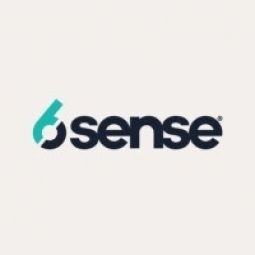Technology Category
- Functional Applications - Enterprise Resource Planning Systems (ERP)
Applicable Industries
- Healthcare & Hospitals
- Pharmaceuticals
Applicable Functions
- Product Research & Development
- Sales & Marketing
Use Cases
- Demand Planning & Forecasting
About The Customer
Florence Healthcare is a leading provider of clinical trial software, serving more than 10,000 research sites across 45 countries. Their software simplifies the management of regulatory requirements of clinical trials for medical researchers. Florence Healthcare's software has been instrumental in accelerating the documentation process, tracking records, and consolidating data for global clinical trials, including Pfizer's COVID-19 mRNA vaccine. The company primarily worked with mid-size biomedical and pharmaceutical research firms before landing a contract with Pfizer. This success sparked a desire to expand their client base to include more Big Pharma clients, leading to their partnership with 6sense.
The Challenge
Florence Healthcare, a provider of clinical trial software used by over 10,000 research sites in 45 countries, faced a significant challenge in expanding its customer base. After successfully working with Pfizer on their COVID-19 mRNA vaccine trials, Florence Healthcare aimed to win more Big Pharma clients. However, their previous marketing approach, which Director of Programmatic Marketing Jenny Bunn described as 'spray and pray', was not sufficient for capturing opportunities like Pfizer. This approach involved building brand awareness with hopefully relevant ads, driving customers to hopefully useful content, and enticing them into hopefully productive conversations. While this strategy had been successful in winning small and midsize customers, a more sophisticated approach was needed to attract larger pharmaceutical companies.
The Solution
To address this challenge, Florence Healthcare partnered with 6sense in 2021. The 6sense data allowed Florence to identify which accounts were shopping for new solutions, target specific audiences with hyper-focused marketing messaging, capture account engagement, and boost and prioritize outreach to generate predictable revenue. Initially, Bunn tied 6sense insights to ad campaigns to improve audience and message targeting. She also used 6sense to build an integrated campaign targeting mid-market accounts based on Ideal Customer Profile criteria, resulting in 2.5x pipeline growth. Furthermore, the business development team used 6sense data to launch an outbound strategy, enabling them to conduct outreach without resorting to cold calls. Finally, Bunn worked with the strategic accounts team to orchestrate a messaging campaign designed to attract prospects to a webinar, using 6sense data to identify and invite potential clients.
Operational Impact
Quantitative Benefit

Case Study missing?
Start adding your own!
Register with your work email and create a new case study profile for your business.
Related Case Studies.

Case Study
Case Study: Pfizer
Pfizer’s high-performance computing software and systems for worldwide research and development support large-scale data analysis, research projects, clinical analytics, and modeling. Pfizer’s computing services are used across the spectrum of research and development efforts, from the deep biological understanding of disease to the design of safe, efficacious therapeutic agents.

Case Study
Hospital Inventory Management
The hospital supply chain team is responsible for ensuring that the right medical supplies are readily available to clinicians when and where needed, and to do so in the most efficient manner possible. However, many of the systems and processes in use at the cancer center for supply chain management were not best suited to support these goals. Barcoding technology, a commonly used method for inventory management of medical supplies, is labor intensive, time consuming, does not provide real-time visibility into inventory levels and can be prone to error. Consequently, the lack of accurate and real-time visibility into inventory levels across multiple supply rooms in multiple hospital facilities creates additional inefficiency in the system causing over-ordering, hoarding, and wasted supplies. Other sources of waste and cost were also identified as candidates for improvement. Existing systems and processes did not provide adequate security for high-cost inventory within the hospital, which was another driver of cost. A lack of visibility into expiration dates for supplies resulted in supplies being wasted due to past expiry dates. Storage of supplies was also a key consideration given the location of the cancer center’s facilities in a dense urban setting, where space is always at a premium. In order to address the challenges outlined above, the hospital sought a solution that would provide real-time inventory information with high levels of accuracy, reduce the level of manual effort required and enable data driven decision making to ensure that the right supplies were readily available to clinicians in the right location at the right time.

Case Study
Gas Pipeline Monitoring System for Hospitals
This system integrator focuses on providing centralized gas pipeline monitoring systems for hospitals. The service they provide makes it possible for hospitals to reduce both maintenance and labor costs. Since hospitals may not have an existing network suitable for this type of system, GPRS communication provides an easy and ready-to-use solution for remote, distributed monitoring systems System Requirements - GPRS communication - Seamless connection with SCADA software - Simple, front-end control capability - Expandable I/O channels - Combine AI, DI, and DO channels

Case Study
Driving Digital Transformations for Vitro Diagnostic Medical Devices
Diagnostic devices play a vital role in helping to improve healthcare delivery. In fact, an estimated 60 percent of the world’s medical decisions are made with support from in vitrodiagnostics (IVD) solutions, such as those provided by Roche Diagnostics, an industry leader. As the demand for medical diagnostic services grows rapidly in hospitals and clinics across China, so does the market for IVD solutions. In addition, the typically high cost of these diagnostic devices means that comprehensive post-sales services are needed. Wanteed to improve three portions of thr IVD:1. Remotely monitor and manage IVD devices as fixed assets.2. Optimizing device availability with predictive maintenance.3. Recommending the best IVD solution for a customer’s needs.

Case Study
Fusion Middleware Integration on Cloud for Pharma Major
Customer wanted a real-time, seamless, cloud based integration between the existing on premise and cloud based application using SOA technology on Oracle Fusion Middleware Platform, a Contingent Worker Solution to collect, track, manage and report information for on-boarding, maintenance and off-boarding of contingent workers using a streamlined and Integrated business process, and streamlining of integration to the back-end systems and multiple SaaS applications.








